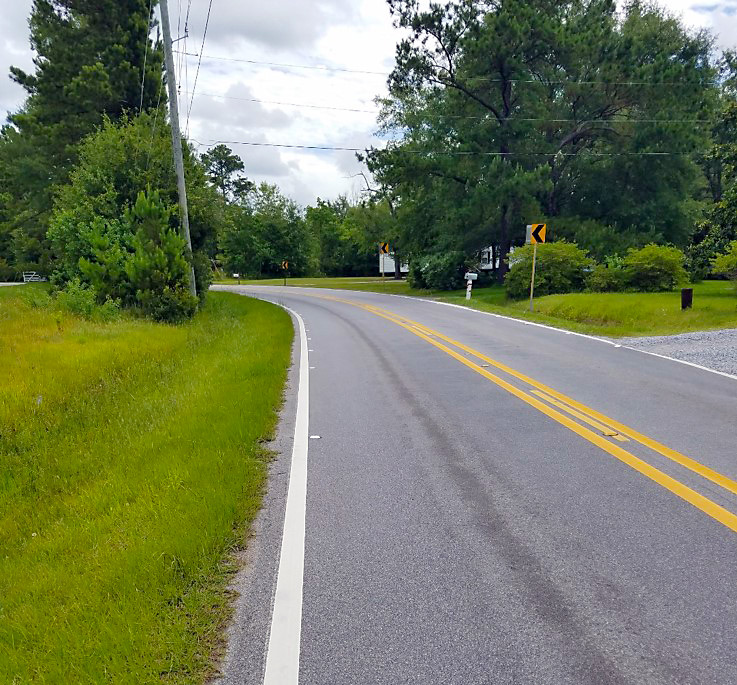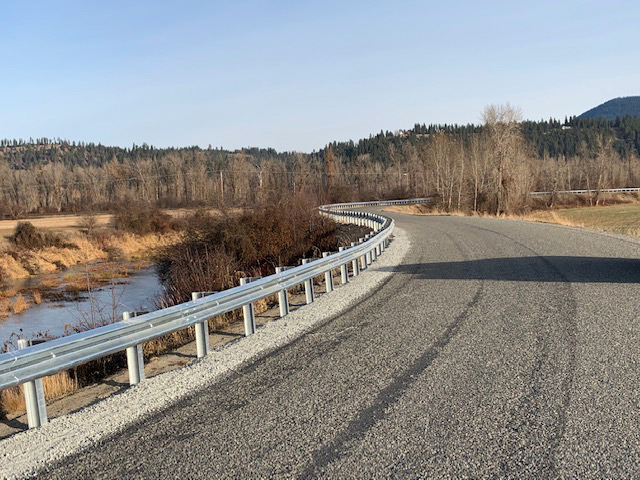Transportation agencies bundle projects to boost rural roadway safety
Highway agencies in Louisiana, Mississippi, and Idaho combined the benefits of the Every Day Counts innovations on project bundling and reducing rural roadway departures to make their roads safer for drivers while using resources cost-effectively.
The Louisiana Department of Transportation and Development (DOTD) helps local agencies make safety improvements by coordinating bundling of projects. The process starts with the Louisiana Local Road Safety Program, which identifies locations in each parish with the most crashes and appropriate countermeasures for these roads. Improvements that reduce roadway departures are typically low-cost treatments such as curve signing and pavement markings to make it easier for drivers to navigate roads. They also include high-friction surface treatments (HFST) that help motorists maintain better control.
Multiple local agencies may own the roads in a parish, which creates inefficiency if each agency develops separate contracts for safety improvements. When neighboring parishes have plans to deploy the same countermeasure, it also provides an opportunity to improve efficiency. That’s where bundling comes in. The Louisiana DOTD combines similar improvements in a single contract covering all project phases, from engineering to construction to inspection. Bundling these improvements leverages economies of scale while strategically addressing safety issues more rapidly and comprehensively.
Upcoming bundles the Louisiana DOTD has planned include signing and striping projects in Iberia Parish and the city of New Iberia, St. Landry and St. Martin Parishes, and Vernon and Sabine Parishes. A project bundle for the Lafayette Consolidated Government and city of Scott covers signing, striping, and HFST projects.
The Gulf Regional Planning Commission (GRPC), the Mississippi Gulf Coast’s metropolitan planning organization, coordinated with the Mississippi Department of Transportation (MDOT) and Federal Highway Administration on a program to develop transportation safety projects. The program, for which GRPC set aside about $500,000 a year, focused on reducing lane departure crashes in Hancock, Harrison, and Jackson Counties.
 Crashes dropped 80 percent at a Jackson County, MS, location after signing, striping, and shoulder improvements were installed as part of a bundled project.
Crashes dropped 80 percent at a Jackson County, MS, location after signing, striping, and shoulder improvements were installed as part of a bundled project.GRPC used MDOT crash data to identify problem locations, most of which were curves in rural parts of each county. Applying a systemic approach, GRPC identified sites throughout the counties with similar curve characteristics, indicating a high risk for lane departure crashes. The commission bundled 24 sites for improvement into three plans, specifications, and engineering packages, one for each county. GRPC turned the bundled projects—which included signing, striping, rumble strips, shoulder improvements, and raised pavement markers—over to the counties to construct.
Before-and-after crash analysis determined that the projects resulted in a 36 percent crash reduction at the 24 sites. Two locations on Daisy Vestry Road in Jackson County experienced an 80 percent drop in crashes after the safety improvements were installed. The average cost of each site in the initial phase of projects was $80,000. As GRPC developed the second phase, it was able to cut the cost per site in half by including less asphalt work, using alternative treatments, and locating bundled project sites closer together.
Idaho’s Local Highway Technical Assistance Council (LHTAC), which connects local jurisdictions with resources to build and maintain their highways, used bundling to increase efficiency on guardrail installation projects. The projects, funded through the Local Highway Safety Improvement Program LHTAC administers, were aimed at reducing fatal and serious injury crashes.
“It can be more difficult for LHTAC to get small projects designed and constructed at a reasonable cost, so we are trying to get economy of scale by combining multiple projects,” said Brian Wright, LHTAC’s safety engineer. The bundled project is more efficient for LHTAC to administer because it involves fewer agreements and less coordination with engineers and contractors.
The latest guardrail project bundle involved three local jurisdictions in northern Idaho—Boundary County, Lakes Highway District, and Eastside Highway District—and included about 3,100 feet of guardrail. If each jurisdiction had tried to contract the work individually, there may not have been a bid submitted because of the small scope of the work. LHTAC has also bundled projects for signs installed by local jurisdictions. LHTAC plans to continue to pursue project bundling with guardrail and other safety countermeasures.
 Idaho’s Local Highway Technical Assistance Council bundled guardrail installation projects to increase efficiency and safety.
Idaho’s Local Highway Technical Assistance Council bundled guardrail installation projects to increase efficiency and safety.